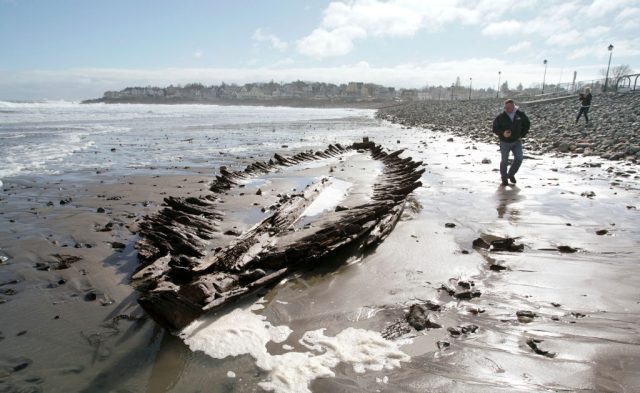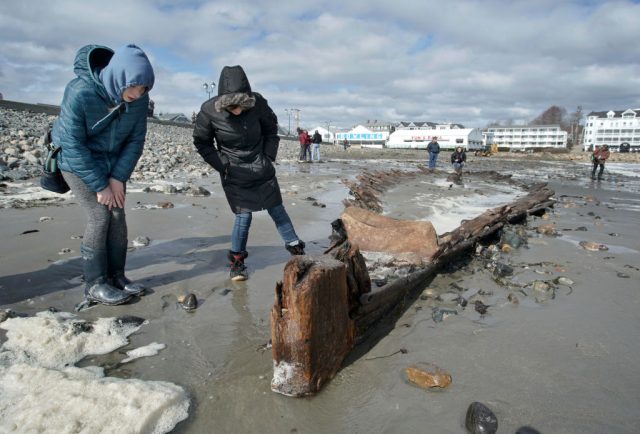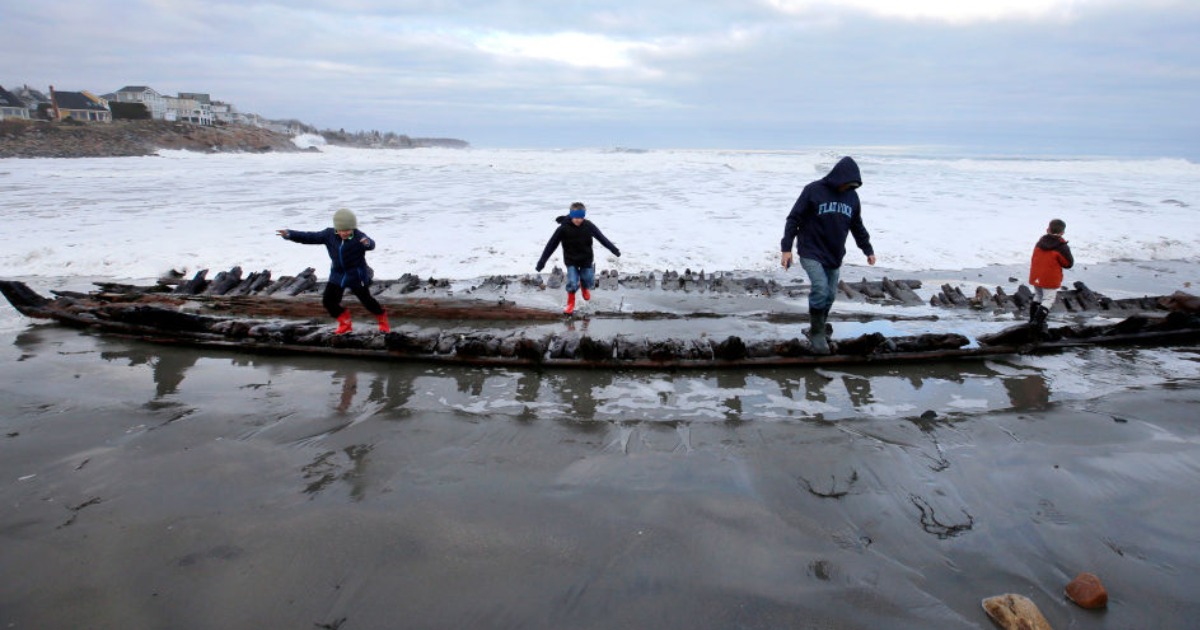Maine is often battered by wild, windy storms, breeding grounds for a shipwreck, and Maine has had plenty. When those winds toss and turn the coast, and ocean waters churn and froth in huge waves, the state’s shorelines sometimes reveal long buried treasures that are spit back, so to speak, onto land from the murky depths.
And so it went in 2018, when a storm known as a nor’easter raged in York Beach and revealed the stark outline of a vessel first seen on shore in 1958, but only recently identified as the cargo ship, Defiance. The vessel was used, as so many boats were centuries ago, to move cargo up and down the coast to communities in many ports.
After doing an analysis of the wood used to build the ship, experts at Cornell University’s Tree Ring Lab have concluded the ship was built around 1738, which predates the American Revolution. In a recent interview with news website Boston.com, historic archaeologist Leith Smith, with Maine Historic Preservation, said, “We think it was probably driven ashore during a storm, and it was pushed so far up onto the beach that it couldn’t be pulled back into the water.”

Although the shipwreck had first been spotted more than 50 years ago, it has since then appeared and disappeared on the shore, covered and uncovered by shifting sands and ebbing and flowing tides. Stefan Claesson, a local marine archaeologist, decided finally to do some “good, old fashioned historical research,” as he described it to Seacoast Online, to find clues to the ship’s identity.
During his preliminary work, Claesson suspected the wreck was a different ship, the Industry, but soon realized that that vessel went down in a different spot along the coast. It was when he learned of the Defiance’s fate that he put two and two together, so to speak, and realized it was the wreck in York Beach.

The Defiance was intending to dock at Portland’s Casco Bay, after leaving Salem in 1769. A storm intervened, and it sank onto rocks along Cape Neddick Cove. The crew of four survived and even tried to save the ship, but it soon went down, along with all the cargo aboard it.
Since the first appearance of the Defiance in 1958, and during its subsequent appearances over the years, both locals and tourists have visited the wreck and, unfortunately, chipped at pieces of the hull to take away as souvenirs. Now that it’s been properly identified as a valuable archaeological treasure, Claesson would like to see it preserved more carefully.
However, as he acknowledged to Seacoast Online, removing the artifacts from the beach might cause even more damage to what’s left of the vessel. Instead, he recommends that the site be roped off and surrounded with bags, to keep people who want to see it up close from damaging it further.
“I’m not trying to be the archaeological police,” Claesson said. “But people have been interacting with this site for decades. I’d love to see photos or learn anything else about it, to be able to tell the (full) story of the site.”
The Defiance was not the only ship to meet such a fate in the often stormy waters off the Atlantic coast. As Smith explained to Boston.com, it, and others just like it, “…is the kind of 18 wheeler of today. “Basically, it was loaded up with all kinds of goods, whatever was being traded, going from port to port to port. And there were hundreds, if not thousands of boats doing this.”
Related Article: Waves Uncover Infamous 1919 Shipwreck Tied To Mutiny
Listening to these experts muse about the Defiance makes one wonder how many ships are lying out there in dark and cold waters, waiting for marine archaeologists like Claesson to uncover them, tell their stories and educate us about life, and commerce, several centuries ago, before America even became an independent republic. It is mysteries like these that make history so intriguing, and so fundamentally vital to all of us.
